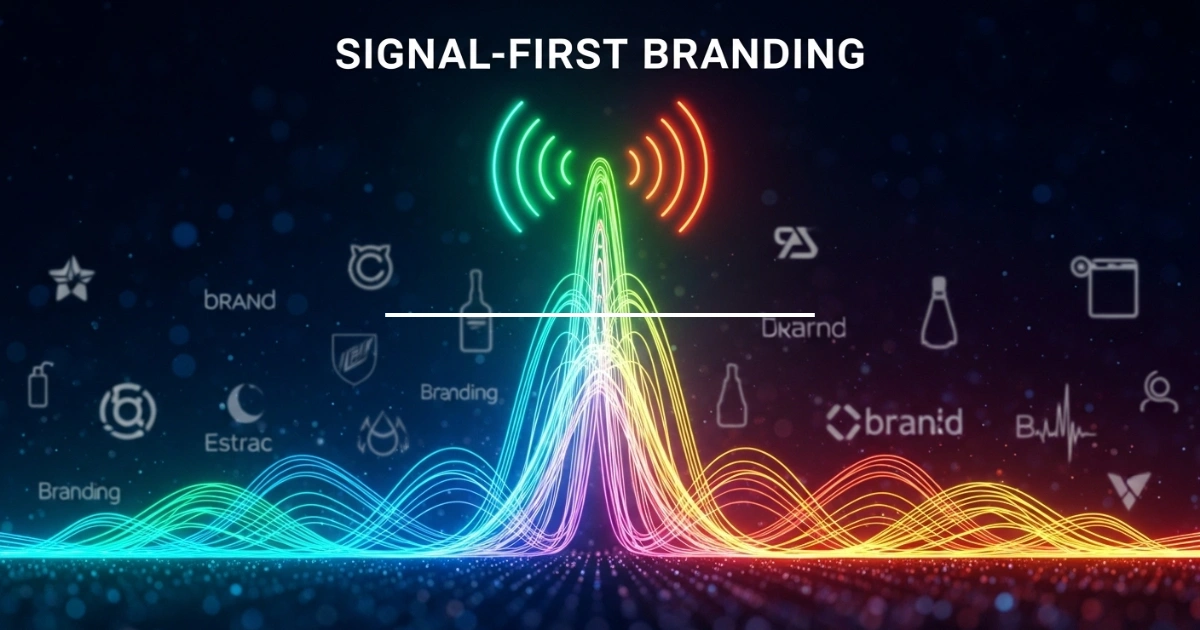Signal-First Branding: Building Trust in a Digital World

Contents
- 1 What is Signal-First Branding?
- 2 The Core Principles of Signal-First Branding
- 3 Benefits of Signal-First Branding
- 4 How to Implement Signal-First Branding
- 5 Real-World Examples of Signal-First Branding
- 6 Common Mistakes to Avoid
- 7 Measuring the Success of Signal-First Branding
- 8 The Future of Signal-First Branding
In today’s fast-paced digital landscape, signal-first branding has emerged as a powerful strategy for businesses aiming to stand out and foster trust with their audiences. Unlike traditional branding, which often prioritizes aesthetics or messaging, signal-first branding focuses on delivering clear, authentic, and consistent signals that resonate with consumers. This approach ensures your brand communicates reliability and value from the first interaction. By prioritizing signals—whether through messaging, design, or customer experience—businesses can create meaningful connections that drive engagement and loyalty. In this article, we’ll explore the concept of signal-first branding, its benefits, and actionable strategies to implement it effectively, ensuring your brand thrives in a competitive market.
What is Signal-First Branding?
Signal-first branding is a strategy that emphasizes sending clear, intentional signals to your audience to build trust and credibility. Unlike traditional branding, which may focus heavily on logos, taglines, or visual identity, signal-first branding prioritizes the messages and actions that shape consumer perceptions. These signals can include transparent communication, consistent customer experiences, and authentic storytelling that align with your brand’s values.
For instance, when a company responds promptly to customer inquiries on social media, it sends a signal of reliability and care. Similarly, using consistent messaging across platforms reinforces brand identity. By focusing on these signals, businesses can create a cohesive narrative that resonates with their target audience. Consequently, signal-first branding helps brands stand out in a crowded digital space where trust is often hard to earn.
Why Signal-First Branding Matters
In a world where consumers are bombarded with information, standing out requires more than a flashy logo or catchy slogan. Signal-first branding matters because it addresses the modern consumer’s need for authenticity and transparency. According to a 2023 survey by Edelman, 63% of consumers trust brands that demonstrate consistent and honest communication. By prioritizing clear signals, businesses can build stronger relationships with their audience.
Moreover, signal-first branding aligns with how consumers make decisions. People rely on cues—such as reviews, social proof, or a brand’s response to crises—to determine trustworthiness. By intentionally crafting these signals, brands can influence perceptions and drive loyalty. For example, a company that openly addresses a product issue and offers solutions sends a strong signal of accountability, which can enhance customer trust.
The Core Principles of Signal-First Branding
To implement signal-first branding effectively, businesses must adhere to several core principles. These principles ensure that every interaction with your audience reinforces trust and credibility.

1. Clarity in Messaging
Clear messaging is the cornerstone of signal-first branding. Consumers should immediately understand what your brand stands for and what value it offers. Avoid jargon or vague statements that confuse your audience. Instead, use simple, direct language that communicates your brand’s purpose.
For example, a tech startup might use the tagline “Empowering Your Future” but fail to explain how. A signal-first approach would refine this to “Simplifying Technology for Small Businesses,” clearly signaling the brand’s focus and value. As a result, potential customers can quickly grasp the brand’s mission and relevance to their needs.
2. Consistency Across Channels
Consistency is critical in signal-first branding. Every touchpoint—whether your website, social media, or customer service—must reinforce the same message. Inconsistent signals, such as mismatched visuals or conflicting tones, can confuse consumers and erode trust.
To achieve consistency, create a brand style guide that outlines your tone, visuals, and key messages. For instance, a retail brand might use warm, friendly language on social media and ensure its website reflects the same tone. This unified approach strengthens the brand’s identity and builds consumer confidence.
3. Authenticity and Transparency
Authenticity is non-negotiable in signal-first branding. Consumers can quickly spot inauthentic brands, and trust is hard to regain once lost. To signal authenticity, be transparent about your processes, values, and even mistakes. For example, if a product launch faces delays, communicate openly with customers about the reasons and solutions.
Patagonia, the outdoor clothing brand, exemplifies this principle by openly sharing its commitment to sustainability. By publishing detailed reports on its environmental impact, Patagonia sends a clear signal of authenticity, earning consumer trust and loyalty.
4. Customer-Centric Experiences
Signal-first branding prioritizes the customer at every stage. From user-friendly website navigation to responsive customer support, every interaction should signal that the brand values its audience. For instance, offering a hassle-free return policy signals confidence in product quality and care for customer satisfaction.
To implement this, regularly gather feedback through surveys or social media to understand customer pain points. Then, use this data to refine your processes, ensuring every touchpoint reflects a customer-first approach.
Benefits of Signal-First Branding
Adopting a signal-first branding strategy offers several advantages that can propel your business forward. Let’s explore the key benefits that make this approach a game-changer.

1. Enhanced Trust and Credibility
Trust is the foundation of any successful brand, and signal-first branding excels at building it. By consistently delivering clear and authentic signals, businesses can establish themselves as reliable and credible. For example, a 2024 study by Nielsen found that 71% of consumers are more likely to purchase from brands they perceive as trustworthy.
When a brand signals transparency—such as by sharing behind-the-scenes content or addressing customer concerns promptly—it fosters a sense of reliability. This trust translates into stronger customer relationships and increased brand loyalty.
2. Improved Customer Engagement
Signal-first branding encourages deeper engagement by aligning with consumer expectations. When your brand sends clear signals about its values and offerings, customers are more likely to interact with your content, share feedback, or recommend your products. For instance, a brand that actively responds to customer comments on social media signals approachability, encouraging more interaction.
Additionally, signal-first branding can boost engagement through storytelling. By sharing authentic stories about your brand’s journey or customer successes, you create emotional connections that keep consumers coming back.
3. Competitive Advantage
In a crowded market, signal-first branding sets your business apart. While competitors may focus on flashy advertising, a signal-first approach prioritizes meaningful connections. This strategy helps your brand stand out by demonstrating reliability and authenticity—qualities consumers value highly.
For example, a small coffee shop that highlights its locally sourced beans and shares farmer stories signals quality and community focus. This approach can attract customers who prioritize ethical brands, giving the shop a competitive edge over larger chains.
4. Long-Term Loyalty
Signal-first branding fosters loyalty by creating consistent, positive experiences. When customers trust your brand and feel valued, they’re more likely to return. According to a 2023 report by HubSpot, 80% of customers are more likely to stay loyal to brands that prioritize transparency and customer experience.
By focusing on clear signals, such as reliable customer service or consistent product quality, businesses can build lasting relationships that drive repeat purchases and word-of-mouth referrals.
How to Implement Signal-First Branding
Now that we’ve covered the principles and benefits, let’s dive into actionable strategies to implement signal-first branding. These steps will help you create a cohesive, trustworthy brand that resonates with your audience.

Step 1: Define Your Brand’s Core Signals
Start by identifying the key signals your brand wants to send. These signals should align with your values, mission, and target audience. Ask yourself: What do we want customers to feel when they interact with our brand? For example, a fitness brand might aim to signal empowerment and inclusivity.
Create a list of 3–5 core signals, such as reliability, innovation, or community focus. Then, ensure every aspect of your branding—from your website to your customer service—reflects these signals.
Step 2: Audit Your Current Branding
Conduct a thorough audit of your existing branding to identify gaps or inconsistencies. Review your website, social media, and customer touchpoints to ensure they align with your core signals. For instance, if your brand signals professionalism but your website has outdated designs, it sends conflicting messages.
Use tools like Google Analytics or social media insights to track how customers perceive your brand. Additionally, gather feedback through surveys to understand where improvements are needed.
Step 3: Optimize Digital Touchpoints
Your digital presence is a critical component of signal-first branding. Optimize your website, social media, and email campaigns to send clear, consistent signals. For example, ensure your website is user-friendly, with fast load times and intuitive navigation, to signal reliability.
On social media, post regularly and engage with followers to signal approachability. Use tools like Hootsuite or Buffer to schedule consistent posts and monitor engagement. Additionally, ensure your email campaigns use personalized, transparent messaging to build trust.
Step 4: Leverage Social Proof
Social proof, such as customer reviews or testimonials, is a powerful signal of credibility. Encourage satisfied customers to leave reviews on platforms like Google or Yelp. Display these reviews prominently on your website to signal trustworthiness.
For example, a software company might showcase case studies of successful client projects. By highlighting real-world results, the brand signals expertise and reliability, attracting new customers.
Step 5: Train Your Team
Your employees are key to delivering signal-first branding. Train your team to embody your brand’s values in every customer interaction. For instance, customer service representatives should be empowered to resolve issues quickly, signaling care and efficiency.
Regularly hold workshops or training sessions to align your team with your branding goals. Share examples of successful signal-first interactions to inspire your staff.
Step 6: Monitor and Adapt
Signal-first branding is not a one-time effort; it requires ongoing monitoring and adaptation. Use analytics tools to track engagement metrics, such as website bounce rates or social media interactions. If certain signals aren’t resonating, adjust your approach.
For example, if customers respond positively to behind-the-scenes content but ignore promotional posts, focus more on storytelling. By staying agile, you can ensure your signals remain relevant and effective.
Real-World Examples of Signal-First Branding
To illustrate the power of signal-first branding, let’s look at two brands that excel in this area.

1. Warby Parker
Warby Parker, the eyewear retailer, uses signal-first branding to emphasize affordability and social responsibility. By offering a “Buy a Pair, Give a Pair” program, the brand signals its commitment to making a positive impact. Additionally, its user-friendly website and transparent pricing signal accessibility and trust, helping Warby Parker build a loyal customer base.
2. Glossier
Beauty brand Glossier leverages signal-first branding by prioritizing customer feedback and inclusivity. By actively engaging with customers on social media and incorporating their input into product development, Glossier signals that it values its community. This approach has helped the brand cultivate a dedicated following and drive word-of-mouth growth.
Common Mistakes to Avoid
While signal-first branding offers immense potential, there are pitfalls to watch out for. Here are common mistakes and how to avoid them:

1. Inconsistent Messaging
Sending mixed signals, such as using different tones on social media and your website, can confuse customers. To avoid this, create a brand style guide and ensure all teams adhere to it.
2. Overpromising
Promising more than you can deliver erodes trust. Be realistic about what your brand can offer, and focus on delivering consistent, high-quality experiences.
3. Ignoring Feedback
Failing to listen to customer feedback can weaken your signals. Regularly collect and act on feedback to show customers you value their input.
4. Lack of Authenticity
Inauthentic signals, such as exaggerated claims or forced storytelling, can backfire. Always align your signals with your brand’s true values and capabilities.
Measuring the Success of Signal-First Branding
To ensure your signal-first branding efforts are effective, track key performance indicators (KPIs). Here are some metrics to monitor:

- Customer Trust Scores: Use surveys to measure how customers perceive your brand’s trustworthiness.
- Engagement Rates: Track likes, comments, and shares on social media to gauge audience interaction.
- Conversion Rates: Monitor how many visitors take desired actions, such as making a purchase or signing up for a newsletter.
- Customer Retention: Measure repeat purchases or subscription renewals to assess loyalty.
By analyzing these metrics, you can refine your strategy and ensure your signals resonate with your audience.
The Future of Signal-First Branding

As digital landscapes evolve, signal-first branding will become even more critical. With advancements in AI and data analytics, brands can personalize signals to individual consumers, creating hyper-relevant experiences. For example, AI-driven tools can analyze customer behavior to tailor messaging, ensuring every signal feels personal and authentic.
Additionally, as consumers demand greater transparency, brands that prioritize clear and honest signals will gain a competitive edge. By staying ahead of trends and adapting to consumer expectations, businesses can future-proof their signal-first branding strategies.
Conclusion
Signal-first branding is a transformative approach that prioritizes clarity, authenticity, and customer-centricity to build trust and engagement. By focusing on intentional signals—through messaging, consistency, and transparency—businesses can create meaningful connections with their audience. Whether you’re a small startup or an established brand, adopting signal-first branding can elevate your digital presence and drive long-term loyalty. Start by defining your core signals, optimizing your touchpoints, and leveraging social proof to create a brand that resonates. In a world where trust is paramount, signal-first branding is the key to standing out and thriving.






